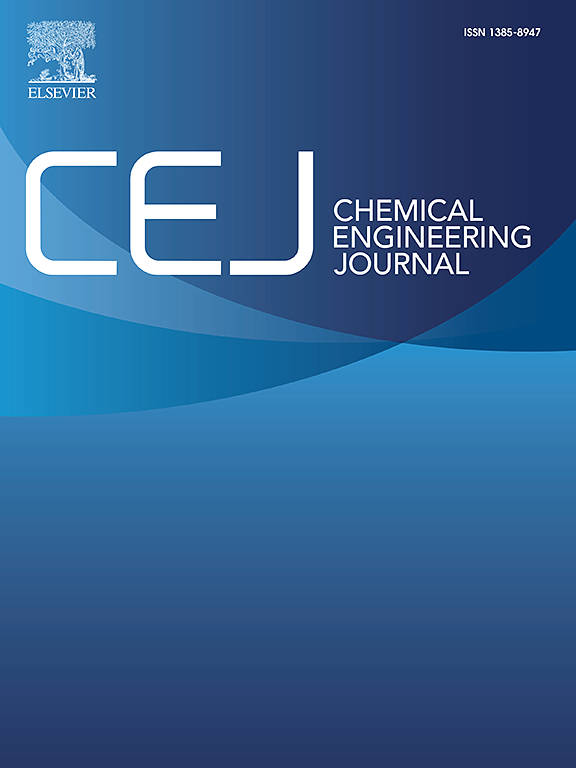A highly sensitive and reusable magnetic nano-electrochemical biosensor for the detection of the liver cancer biomarker heat shock protein 70
IF 13.2
1区 工程技术
Q1 ENGINEERING, CHEMICAL
引用次数: 0
Abstract
A novel composite magnetic nanomaterial, functionalized with the aptamer Apt7, was developed. Its magnetic properties enable effective adsorption onto a magnetic glassy carbon electrode, forming a specific membrane designed for the detection of HSP70. The composite magnetic nanomaterial was synthesized using a chemical reduction method, resulting in uniformly sized Au-coated Fe3O4 nanoparticles (Fe3O4@Au) with excellent electrical conductivity. Furthermore, the high-affinity aptamer Apt7 targeting HSP70 was selected using Systematic Evolution of Ligands by Exponential Enrichment (SELEX) and molecular fishing techniques. The thiol groups within the aptamer were effectively immobilized on the Au-coated Fe3O4 nanoparticles surface via binding interactions with gold (Au). Electrochemical techniques were systematically employed to optimize the Apt7-modified biosensor, yielding a dissociation constant (Kd) of 72.49 pM. The optimized HSP70 biosensor demonstrated an extensive detection range, spanning from 10 pg mL−1 to 200 ng mL−1, with a remarkable detection limit of 0.525 pg mL−1 (S/N = 3). This immunoassay proficiently detected HSP70 in human blood samples and exhibited superior performance relative to the commonly employed ELISA method in clinical analyses.用于检测肝癌生物标志物热休克蛋白70的高灵敏度和可重复使用的磁性纳米电化学生物传感器
研制了一种新型复合磁性纳米材料,并以Apt7为适配体进行了功能化。其磁性能使其有效吸附在磁性玻碳电极上,形成用于检测HSP70的特定膜。采用化学还原法制备了尺寸均匀的au包覆Fe3O4纳米粒子(Fe3O4@Au),具有优异的导电性。此外,利用指数富集(SELEX)配体的系统进化(Systematic Evolution of Ligands)和分子钓鱼技术,选择了靶向HSP70的高亲和力适配体Apt7。适配体内的巯基通过与金(Au)的结合作用有效地固定在Au涂层的Fe3O4纳米颗粒表面。系统地利用电化学技术对apt7修饰的生物传感器进行优化,得到解离常数(Kd)为72.49 pM。优化后的HSP70生物传感器具有广泛的检测范围,检测范围从10 pg mL - 1到200 ng mL - 1,检测限为0.525 pg mL - 1 (S/N = 3)。该免疫分析法能够熟练地检测人血液样品中的HSP70,相对于临床分析中常用的ELISA方法具有更好的性能。
本文章由计算机程序翻译,如有差异,请以英文原文为准。
求助全文
约1分钟内获得全文
求助全文
来源期刊

Chemical Engineering Journal
工程技术-工程:化工
CiteScore
21.70
自引率
9.30%
发文量
6781
审稿时长
2.4 months
期刊介绍:
The Chemical Engineering Journal is an international research journal that invites contributions of original and novel fundamental research. It aims to provide an international platform for presenting original fundamental research, interpretative reviews, and discussions on new developments in chemical engineering. The journal welcomes papers that describe novel theory and its practical application, as well as those that demonstrate the transfer of techniques from other disciplines. It also welcomes reports on carefully conducted experimental work that is soundly interpreted. The main focus of the journal is on original and rigorous research results that have broad significance. The Catalysis section within the Chemical Engineering Journal focuses specifically on Experimental and Theoretical studies in the fields of heterogeneous catalysis, molecular catalysis, and biocatalysis. These studies have industrial impact on various sectors such as chemicals, energy, materials, foods, healthcare, and environmental protection.
 求助内容:
求助内容: 应助结果提醒方式:
应助结果提醒方式:


